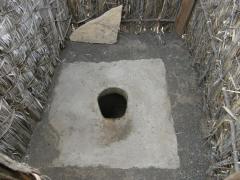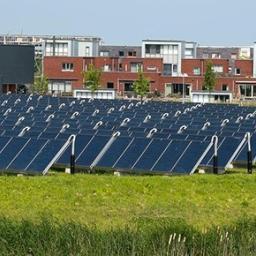Limited consumer willingness diminishes the potential environmental gains of dietary change
A collaborative study between researchers from the Institute of Environmental Science of Leiden University (CML) and the Netherlands Environmental Assessment Agency (PBL) sought to understand how differences in consumer’s diets and their willingness to change them can get us closer to understanding both the potential and actual environmental gains of dietary shifts. Including willingness data revealed that there is a policy action gap that governments need to fill to reap the potential sustainability gains offered by dietary transitions. The results underline the importance of integrating consumer group behaviour in footprinting studies, as their motivation to change on a voluntary basis is limited.
Expected environmental gains from transforming dietary choices of Dutch consumers
Meat (like beef, chicken, and pork) and dairy products constitute about a quarter of the daily caloric intake of the average Dutch citizen, but contribute on average almost 60% to both the total greenhouse gas emissions and to the biodiversity footprint of the average Dutch diet. It is already known that shifting towards a plant-based diet presents numerous environmental benefits. Yet, the environmental gains anticipated from dietary changes often assumes a nation-wide adoption of plant-based diets, with no attention to what different groups in the Dutch population currently eat, nor to their willingness or resistance to change.
The novelty of this study lies in the integration in a life cycle approach of biodiversity impacts and data on the willingness of Dutch consumers to shift their dietary behaviour. The research used data from a cross-section of the population, from food recall to behavioural surveys. By linking this data with life cycle inventory analysis for 220 food products, the researchers analysed the dietary footprints of consumer groups (based on age and sex) across key environmental impact areas, including land use, greenhouse gas emissions, blue water consumption, and biodiversity. The study builds on earlier work from CML on USA consumer groups, as well as on PBL work on food supply-chain interventions and on consumer willingness to change.
The research explored the potential environmental gains of shifting diets towards adopting a more sustainable and healthy diet, as recommended by the EAT-Lancet Commission. However, such a broad dietary change is not easily achieved, as it demands changes in deep-rooted habits. Still, a relevant number of individuals could be open to quick fixes by adopting simpler solutions for a sustainable lifestyle. This is why the researchers also modelled a single product substitution, namely from cow milk to soy drink. The latter has a relatively similar nutritional profile to milk but a significantly lower environmental impact.
The key findings from the study include:
- Meat and dairy consumption contributes significantly to the greenhouse gas footprint (on average 59%), land footprint (54%), and biodiversity footprint (59%) of the total dietary footprint.
- Adult male consumers impose a 30-32% greater burden than women across these impact areas mentioned above.
- If widely adopted by the Dutch adult population, replacing cow milk with soy drink could reduce the greenhouse gas, land, and biodiversity footprints by approximately 8%.
- A wide adoption of the sustainable and healthy diet from the EAT-Lancet could further reduce these footprints by approximately 20%, albeit with a significantly increased blue water footprint compared to the current diet's blue water footprint.
- However, incorporating gender- and age-specific willingness to reduce meat and dairy consumption reveals, that because 27% of the Dutch population is willing to voluntarily adopt an alternative diet low in animal products, the environmental gains of a dietary shift for land use and greenhouse gas emissions would diminish to a mere 4%.
Under the currently used policy measures for influencing dietary choices, consumers show a limited willingness to adopt sustainable diets, especially if it means eating less meat or dairy products. However, substituting some relatively simple high-impact food products might offer a short-term opportunity to accelerate sustainable dietary transitions, without facing as much resistance from consumers.
The results may serve to address that governments should go beyond policy action that relies on awareness building (for instance by information sharing), as intrinsic motivations by consumers to change is not enough to significantly reduce the consumption footprint. This further means that all actors in food systems have a role to play. Previous research by PBL has also shown that multiple interventions in food supply-chains are required to make a significant change in the total environmental burden from food consumption.
The study marks a step forward in understanding the relationship between dietary choices of consumer groups and environmental sustainability, offering valuable insights for policymakers, researchers, and stakeholders striving for a more sustainable food system. It highlights the policy and action gap for dietary transitions that is often hidden in other footprint studies that ignore consumer preferences, and focuses on potential gains only by assuming uniform adoption of sustainable diets. Hence, it emphasises the need for further food footprint studies to incorporate consumer group behaviour and to identify policy actions targeting specific consumer groups to secure a sustainable food system.
More information
Authors
Specifications
- Publication title
- Consumer resistance diminishes environmental gains of dietary change
- Publication date
- 1 May 2024
- Publication type
- Article
- Page count
- 15
- Publication language
- English
- Magazine
- Environmental Letters
- Issue
- Volume 19, Number 5
- Product number
- 4772




